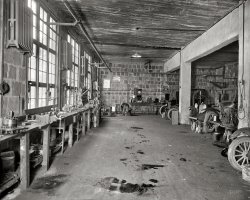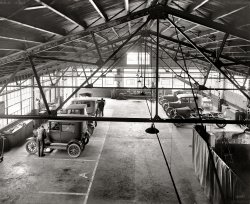
MAY CONTAIN NUTS

Search Shorpy
SHORPY ART

Framed or unframed, desk size to sofa size, printed by us in Arizona and Alabama since 2007. Explore now.
Join and Share
Ad-Free Shorpy
Shorpy is funded by you. Patreon contributors get an ad-free experience.
Learn more.

Recent comments
- Lofty addition
- In 1912
- Keenan Building
- Six years old
- Taken from the P.J. McArdle Roadway?
- It stood only 47 years
- Three track mind
- Incline to the right
- Reach for the sky, 1912 style
- No clean sweep
- Same Job Title, Same Face
- Sadly Lost
- Beautiful ...
- Where you get your kicks
- Aim High
- Pueblo Revival sisters
- Pueblo Neoclassicism
- Milk Man
- Regional dialect.
- Spielberg's inspiration
- Great Photo
- Loaf Story
- Do you still have the Rakes category?
- Could almost be a scene from the 1957 movie 'Hell Drivers'
- The Wages of Fear.
- Conspicuous by their absence
- Got Milk?
- All that aluminum
- No lefties
- Smoke 'em if you've got 'em
Member Photos
The Shorpy
Print Emporium
Print Emporium
Search Shorpy
Search results -- 30 results per page
- Hendrick Motor Co.: 1928
- Takoma Park, Maryland, circa 1928. "Hendrick Motor Co., Carroll Avenue." National Photo Company Collection glass ... Posted by Dave - 09/04/2012 - 9:37pm -
![Hendrick Motor Co.: 1928 Takoma Park, Maryland, circa 1928. "Hendrick Motor Co., Carroll Avenue." National Photo Company Collection glass negative. View full size.
Fordor SedanThe new Model A Fords must have been painted on the building during the period that Ford was transitioning from the seriously outdated Model T, to the all new Model A. The Tudor Sedan shows a fresh air vent in the lower cowl. No production Model A ever had such a vent.
Legible signsI am struck by the bold, clear and legible use of typography in these older photographs. This is in distinction to the blur of pictograms, logos, and hen scratching that passes for public communications nowadays. Just look at the ads all around us. There was something deeply confident as well as respectful of potential customers embodied in our forefathers' use of graphics.
Model T SportscarAn interesting picture. I'd like to take a spin in a car featured on the sign, that Model T Coupe with the rumble seat.
[That's a Model A roadster. - Dave]
Radio DaysThe sign next to the service entrance says "batteries delivered to your home." That's because the majority of home radios in 1928 required a 6-volt lead acid battery to supply their tube filaments. Radios that ran on house current were just coming to market in 1928.
Takoma FordThis dealership later became Takoma Ford. Our family bought several cars from them because the service manager was a neighbor. The mechanical service area was through the big opening in the picture. To enter the body shop underneath you had to drive around the block.
It's a Sport CoupeThat would be a sport coupe... identified by the landau bars. The top does not fold down as it does on a roadster. Roadsters also did not have roll-up windows.
ObservationsObligatory "you can see the photographer in the reflection."
I wonder if this was a planned photo. You'd think they'd make an effort to clean up the lot.
Also, I'm surprised the barber shop didn't make it with all of the men having time to kill while their cars were being repaired.
Fordor ventsThe car on the right side of the sign is a Fordor rather than a Tudor. The early 1928 Fordors did indeed have cowl vents but they were eliminated shortly after introduction. I have a '28 leatherback Fordor like that.
Early 1928 SedanThe early 1928's did have a cowl vent on the lower driver's
cowl. These were called the "AR" model. The early cars had a number of changes in them, as discussed in the book "Henry's Lady" by Ray Miller. So it's an early 28. Thanks.
Cheap GasThe "Gasoline at D.C. Prices" sign is humorous--today it seems like gas gets cheaper the farther you get from urban areas (at least here in the NY/NJ/PA tri-state area); apparently that wasn't always the case.
I wonder if the founders of this dealership are any relation to the Hendrick family in North Carolina that runs several mega dealerships--and a rather successful NASCAR race team.
(The Gallery, Gas Stations, Natl Photo)](https://www.shorpy.com/files/images/33382u.thumbnail.jpg)
- Hendrick Garage: 1928
- 1928. Takoma Park, Maryland. "Hendrick Motor Co. garage." The sign: "All repair work strictly cash." National ... Posted by Dave - 01/05/2015 - 7:18pm -

- In the Shop: 1928
- Takoma Park, Maryland, circa 1928. "Hendrick Motor Co. garage." Our third look at this establishment. National ... Posted by Dave - 08/05/2012 - 1:15pm -

- Juice Bar: 1928
- Takoma Park, Maryland, circa 1928. "Hendrick Motor Co. garage -- Battery Service." Another aspect of the ... Posted by Dave - 07/08/2019 - 4:51pm -
![Juice Bar: 1928 Takoma Park, Maryland, circa 1928. "Hendrick Motor Co. garage -- Battery Service." Another aspect of the establishment last seen here. 8x10 inch glass negative. View full size.
And for your convenience --In case of fire, use the handy bucket of water to toss onto the batteries.
[That's sand. - Dave]
Fully equipped!Lots to see here in this battery service shop, from the fire bucket (just in case), to the batteries stacked on the wooden steps - NOT on the shop floor (still believed to ruin a lead-acid battery.)
Sulfuric acid dispenser on one end of the bench, with a tar pot and (acetylene?) cylinder for heating it at the other.
And a really serious charging rack! With what appears to be a rotary converter to provide the 6+ volts for charging from the shop AC line.
That tankNeeds a chain.
Tar PotThanks to Dbell for clearing that up, I thought it was a just a seriously hard core Coffee maker.
That appears to be a Dynamotor tucked in the corner of the bench, it's an AC motor turning a DC generator, probably the only way to rectify large amounts of current back then.
EquipmentAbove on the wall, obscuring the "R" in "SERVICE", appears to be a gas-fired distiller for (I presume) a source of pure water for the batteries. Also, peeking out behind the battery charging racks on the left, one spies the motor-generator that supplies the charging current.
(The Gallery, Cars, Trucks, Buses, Gas Stations, Natl Photo)](https://www.shorpy.com/files/images/SHORPY-33387u.thumbnail.jpg)























